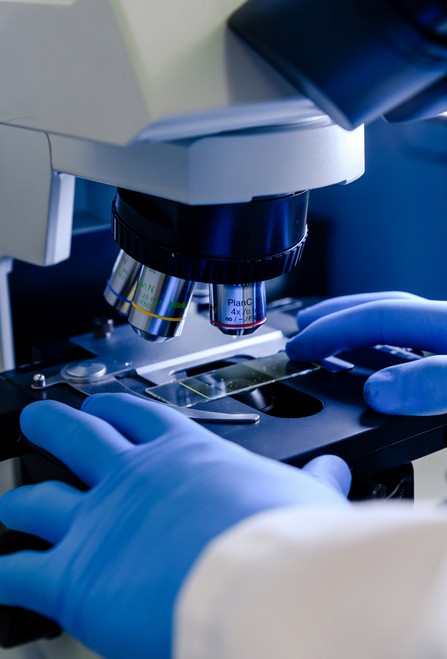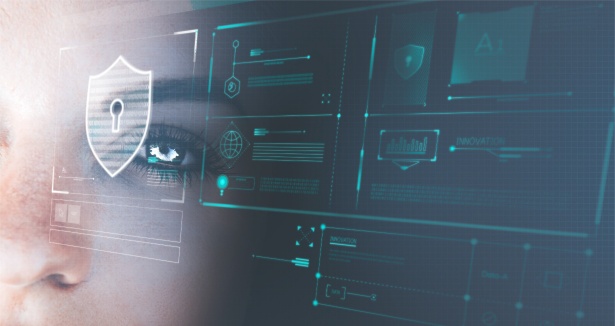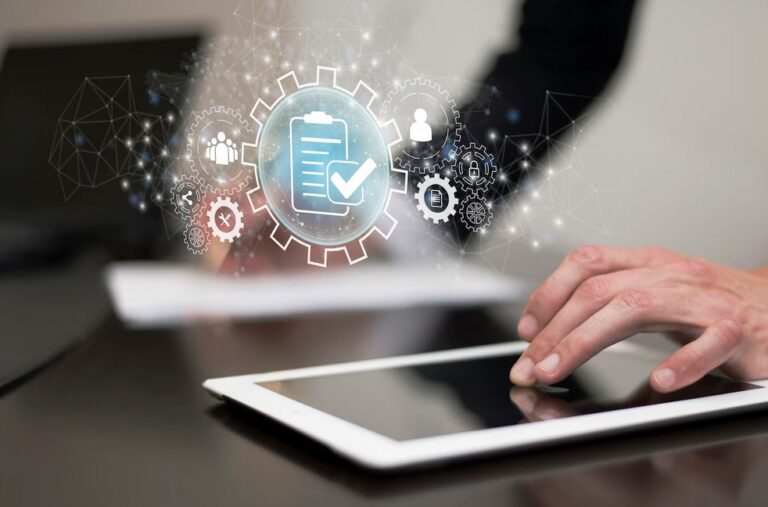Secure Your Perfect Life Science Translation Quote Today.
Stop quoting blindly. Our strategic framework ensures you submit the right information for regulatory-compliant translation success.
Eliminate errors, avoid delays, and reduce costs. Use our ultimate checklist to streamline your clinical, regulatory, or pharmaceutical translation project.
Providing a comprehensive brief guarantees regulatory compliance and reduces the chance of costly, submission-delaying errors.
Aligning on terminology, audience, and intent upfront allows specialists to deliver flawless, high-stakes life science translation services.
Leveraging Translation Memory and providing editable files ensures you get maximum discounts and a precise professional translation services quote.
Maximize ROI: How to Request a Life Science Translation Quote That Delivers.
Abstract.
Securing an accurate and timely quote for life science translation services is the crucial first step toward global success for any pharmaceutical, biotech, or medical device company. In the highly regulated world of clinical trials and regulatory submissions, a successful project doesn’t start with the translation; it starts with the quote. This article introduces the «Project Readiness» Framework, a strategic translation request checklist designed to help you streamline your process and prepare for translation project execution. By providing the essential information outlined below, you move beyond simply asking for a price and instead lay the groundwork for a seamless, high-quality, and compliant partnership with your professional translation services provider. Use this guide to understand exactly what to send a translation agency to get a precise life science translation quote and guarantee the success of your project from day one.
1. Introduction: Understanding the «Project Readiness» Framework.
In the highly regulated world of life science translation services, every detail truly matters. Whether you are launching a new drug, submitting a medical device for approval, or running a global clinical trial, the integrity and compliance of your translated documents are non-negotiable. However, many organizations struggle with project initiation, often providing incomplete information that leads to delays, inaccurate quotes, and costly revisions down the line.
The difference between a good translation project and a perfectly executed one lies in the preliminary planning. A perfect life science translation quote is not just about the numbers; it is a direct reflection of how well you have planned and packaged your project for your vendor. This process is what we call «Project Readiness.»
Moving Beyond the Basic Quote Request.
Too often, a quote request is limited to attaching a file and asking, «How much?» While this provides a word count, it fails to give the translation agency the strategic context needed to assemble the right team, quality assurance workflow, and compliance protocols specific to the life science industry.
Project Readiness is a strategic framework that positions you as an organized partner. By following this expert translation request checklist, you’re not just requesting a price; you’re building a foundation for efficiency, accuracy, and regulatory compliance. You are ensuring that your chosen professional translation services agency can immediately staff the project with linguists who have the exact medical or scientific specialization required, thus mitigating risk and ensuring your project stays on schedule and within budget.
Why a Life Science Focus Demands Extra Detail.
The translation of materials for the life sciences—including pharmaceuticals, biotechnology, and medical devices—is fundamentally different from general business translation. It carries a legal and ethical weight that impacts patient safety, regulatory approval, and massive financial investments. Furthermore, the terminology is complex, constantly evolving, and heavily dictated by local and international regulatory bodies (like the FDA, EMA, or PMDA). Consequently, an incomplete project brief can lead to a generic approach, which is unacceptable when lives and compliance are at stake.This ultimate checklist is designed to help you prepare for translation project execution by ensuring you address the three core areas of any successful translation project: The Core Content (What), the Strategic Context (Why and Who), and the Logistics & Compliance (How). By understanding what to send a translation agency upfront, you unlock speed, accuracy, and better pricing.
2. The «Project Core» Section: Defining Your Documents and Content (The «What»).
The very first piece of information your professional translation services provider needs is a precise definition of the content itself. This goes far beyond a simple word count. It involves strategically outlining the volume, format, and complexity of the materials. To ensure an accurate life science translation quote, you must address the following points with clarity.
Document Type, Format, and Editability.
When you prepare for translation project pricing, the format of your source files is a critical factor that directly influences the cost and timeline. The question is not just what the document is, but how it exists.
File Format: Editable vs. Non-Editable.
- Editable Formats: Files in formats like Microsoft Word (.docx), PowerPoint (.pptx), or Adobe InDesign (.idml) are ideal. Again, these files can be seamlessly imported into a translation management system (TMS) and computer-assisted translation (CAT) tools. This automation makes the translation process faster, more consistent, and significantly cheaper because it requires less manual preparation and reconstruction.
- Non-Editable Formats: These include scanned PDFs, JPEG images, or legacy formats. These require an extra, time-consuming, and expensive step: file conversion or reconstruction, often called Desktop Publishing (DTP) or optical character recognition (OCR). Therefore, always provide the original, editable source files whenever possible to expedite your life science translation quote.
Leveraging Translation Memory (TM) and Content Reuse.
When you detail what to send a translation agency, never underestimate the value of historical data. If your company has had content translated before, even by a different vendor, that data can be leveraged.
- Translation Memory (TM): A TM is a database of previously translated source and target sentences. A professional translation services provider can run your new documents against your existing TM to identify repetitions and fuzzy matches (sentences that are nearly identical).
- The Impact on Cost: Equally important, leveraging a TM leads to substantial discounts. Fully repeated sentences often cost 70-100% less than new words. Furthermore, applying a TM ensures your new translations are perfectly consistent with your previously approved terminology, which is paramount for clinical and regulatory documents. If you have previous translations or a Translation Memory, specify this—it’s a powerful tool to lower your life science translation quote and ensure consistency.
Why Timing is Essential?

How a realistic timeline impacts the accuracy of your quote?
Rush jobs require team-based execution, which, while fast, can increase coordination costs. Providing a soft start date is always preferred.
The timeline must account for the TEP cycle and internal review. Rushing quality assurance increases regulatory risk exponentially.


Expert Tip: Handling Protocol Amendments.
Inform your vendor immediately about source document changes. We use CAT tools to identify only the revised text, minimizing rework and ensuring cost efficiency.
Volume and Scope: Beyond the Word Count.
While word count is the fundamental unit of measurement, a professional agency requires more context about the scope of the material.
Subject Matter and Specialization.
- Specify the Niche: Is the document related to cardiology, oncology, medical devices, or preclinical research? The life science umbrella is vast. For example, translating a marketing brochure for a hospital requires a different skill set than translating an ICH-GCP (International Conference on Harmonisation – Good Clinical Practice) Clinical Trial Protocol. Your agency needs to know if they should assign a Ph.D. in microbiology or a regulatory affairs specialist.
- Identify Criticality: Is the document a Patient Information Leaflet (PIL) where comprehension is vital, or an internal Standard Operating Procedure (SOP)? This distinction dictates the level of quality assurance required. In contrast, an SOP might require a standard translation, whereas a PIL will likely need back translation or cognitive debriefing for guaranteed comprehension.
Identifying «Tricky» Content.
Detailing the presence of certain elements can prevent surprises and delays after the quote is accepted:
- Embedded Graphics: Are there text boxes, diagrams, or charts within the images that require manipulation and translation (DTP)?
- Software Strings: Are you localizing a medical device interface or a companion app? This requires specialized localization engineering, not standard document translation.
- Handwritten Notes: Again, the presence of illegible or handwritten content in patient records or case report forms (CRFs) needs to be addressed upfront, as it introduces an element of transcription and complexity.
3. The «Strategic Context» Section: Providing Crucial Detail for Superior Accuracy (The «Why» & «Who»).
This is the most critical and often overlooked part of any translation request checklist. Providing strategic context is what transforms a generic translation into a high-impact, compliant document tailored for its intended market and purpose. This is where you demonstrate to the agency that you prepare for translation project success strategically.
Target Audience, Region, and Dialect.
A single language, such as Spanish, can have vastly different regional variations and regulatory requirements. This information is non-negotiable for an accurate life science translation quote.
Destination Country and Regulatory Body.
- Specify the Market: Are you targeting Spain (European Spanish), Mexico (Latin American Spanish), or both? Are you translating into Japanese for regulatory submission in Japan (PMDA), or for an internal team in Tokyo? But, regulatory submissions typically require a higher degree of formal, standardized language compared to patient-facing materials.
- Reading Level: On the other hand, for Patient Reported Outcomes (PROs) or Patient Information Leaflets (PILs), the translation must adhere to specific, often lower, reading levels mandated by health literacy guidelines in the target country. This dictates the translator’s approach and requires linguists experienced in patient communication.
Intended Use: Submission vs. Reference.
The intended use of the document is a critical piece of information that dictates the entire Quality Assurance (QA) workflow and, consequently, the price. Besides, this is a key question your professional translation services provider will ask to determine the necessary quality level.
- Formal Submission: If the document is for a regulatory body (e.g., Clinical Study Report to the FDA, Device Labeling to the EMA), the quality bar is highest. This typically mandates a full TEP (Translation, Editing, Proofreading) workflow, often involving two or three separate specialized linguists and potentially requiring a Certificate of Accuracy (which we will discuss later). Furthermore, the risk of error is high, so the investment in quality must match the requirement.
- Internal Reference/Draft: If the document is for internal training, a preliminary review, or general information, the workflow may be streamlined to a «translation only» or «translation plus editor review.» Again, being specific about the intended use allows the agency to provide a tailored and cost-effective quote without over-engineering the quality process for less critical content.
Terminology Management and Brand Voice.
In the life sciences, consistent terminology is not merely a preference; it is a regulatory requirement. Inconsistent drug names, measurement units, or clinical trial phases can introduce major confusion and risk the integrity of your submission. Therefore, the third pillar of your strategic context is terminology control.
Glossaries and Terminology Lists.
When you prepare for translation project execution, the single most valuable non-document asset you can provide is an approved glossary.
- Why They Matter: A glossary ensures that every translator working on your project, even if it’s a large project split among several teams, uses the exact same target-language term for your proprietary drug name, unique device component, or clinical endpoint. This eliminates internal review cycles and prevents regulatory flags due to linguistic variance.
- The Proactive Approach: If you do not have an approved glossary, let your vendor know. A true life science translation services partner will offer to help you create one as part of the project initiation, an investment that will save you significant time and money on all future translations.
Style Guides and Tone.
While compliance requires precision, not every document is a sterile regulatory filing. Marketing materials, patient recruitment flyers, and corporate communications need a specific brand voice.
- Specify the Tone: Is the translation meant to sound formal, authoritative, educational, or compassionate? For instance, a Patient Consent Form must maintain a highly formal, legal tone, whereas a public-facing website should be more engaging and empathetic.
- Brand Voice Consistency: Providing a style guide or previous examples of approved translated marketing copy helps the translator match your brand voice, which is equally important for global outreach and adoption.
4. The «Logistics & Compliance» Section: Outlining the «How» and «When».
Once your translation agency understands the what (content) and the why (context), they need the practical details of the how and when. This section of the translation request checklist addresses the critical factors that determine scheduling, resource allocation, and, crucially, your data security and regulatory needs.
Timeline and Phasing: Setting Realistic Expectations.
The deadline is often the first thing clients mention, but professional translation requires time for the multi-step TEP process. A detailed timeline allows the agency to scope the project correctly and provide an accurate life science translation quote.
The Hard Deadline and the Soft Start.
- Specific Deadline: State the exact date the final translation must be delivered. Is it a phased rollout, or is all 100,000 words needed at once? In contrast, a phased delivery allows the agency to begin work immediately on the highest-priority files while others are finalized.
- Capacity and Quality: Understand that a single, highly specialized medical translator typically produces around 2,000–2,500 words per day. Therefore, a rush job on a large project will necessitate a team approach, which increases coordination effort and potentially requires a higher rate. To get the most favorable professional translation services quote, provide a realistic timeline that accounts for the necessary TEP cycles.
Managing Updates and Changes.
In clinical trials, source documents often undergo revisions even after translation has begun.
- Change Management: Inform the agency upfront about the likelihood of document changes. This allows them to pause work strategically and utilize CAT tool features to identify only the changes, minimizing rework costs and delays when the revised document is provided. Besides, having a pre-agreed process for handling updates is a sign of good Project Readiness.
Required Additional Services (DTP, Localization Engineering, Certification).
Translation is often just one component of a larger project. When you prepare for translation project execution, consider the full scope of what you need for the final deliverable.
Desktop Publishing (DTP).
- The Layout Challenge: DTP is the service needed to recreate the layout of your document after translation. Languages expand or contract (e.g., German is often 30% longer than English), which can break the formatting of Patient Information Leaflets, brochures, or manuals. Again, if your source files are complex InDesign documents or graphically rich PDFs, you will need DTP services.
- Quoting DTP: DTP is quoted separately from the translation and requires specialized graphic design resources. Consequently, detailing your DTP needs upfront ensures that your translation request checklist covers the entire production process.
Localization Engineering.
If your project involves software, applications, or an e-learning platform, standard translation won’t suffice.
- Beyond Documents: Furthermore, you will need localization engineering to handle the technical extraction of text strings, resizing of User Interface (UI) elements, and testing of the localized software within the target environment. This specialization is vital for medical device translation services quote requests where the device interface must be flawless. (For more information, visit our medical device translation dedicated page.
Certification and Legal Requirements.
For regulatory or legal use, a simple translation is not enough; certification is required.
- Certificate of Accuracy: Finally, almost all regulatory submissions require the agency to provide a signed Certificate of Accuracy stating that the translation is a true and complete rendering of the source text. Specify this upfront on your translation request checklist.
- Notarization: In rare cases, a notarized statement might be required. This is a separate administrative step that must be quoted and planned for.
Security, Compliance, and Data Protection.
In the life sciences, data security is paramount. Handling sensitive documents (clinical data, IP, patient records) requires assurance that your professional translation services vendor adheres to stringent protocols.
Adherence to Global Regulations (HIPAA, GDPR).
- Your Agency’s Compliance: Briefly state your requirements: «We require assurance of HIPAA compliance for all patient data handling and GDPR compliance for European patient data.» A top-tier life science translation services agency will use secure, encrypted portals for file transfer and have robust internal security measures, including signing Non-Disclosure Agreements (NDAs) with all staff and linguists. This commitment builds immense trust and is a non-negotiable part of your translation request checklist.
H4: Handling Proprietary Information.
The agency needs to know if the document contains highly sensitive Intellectual Property (IP), such as a patent application or a pre-launch drug name.
- Risk Mitigation: Yet, this knowledge allows the agency to allocate the project to a smaller, dedicated, and highly vetted team of linguists who operate under the strictest security protocols, further minimizing the risk of a breach. Unlock the Blueprint for Successful Translation Projects.
Why the lowest quote is often the most expensive choice for life sciences.



A low quote usually skips necessary TEP and SME review, leading to errors. The cost of delaying a drug submission or correcting a patient safety flaw far exceeds any initial translation savings.

5. From Checklist to Quote: Your Action Plan for «Project Readiness».
You have successfully mapped out the «Project Readiness» framework. You understand the what, the why/who, and the how of your translation needs. Now, it is time to turn this comprehensive translation project checklist into action and get a precise, timely life science translation quote. The final step is engaging your vendor and leveraging their tools to accelerate the process.
The Power of a Comprehensive Translation Brief.
The ultimate goal of this checklist is to create a detailed translation brief template—a single document or form summarizing all the strategic context we have discussed. This is what to send a translation agency to make an immediate, professional impression. A well-constructed brief allows your chosen vendor to bypass the initial discovery questions and jump straight to compiling the perfect team and quote.
What to Ask a Translation Agency Before You Sign.
Besides the details you provide, you must also ask the right questions to qualify your vendor. This is crucial for high-stakes professional translation services.
- Do they have an ISO certification relevant to the life sciences (e.g., ISO 17100 for quality management or ISO 9001)?
- What is their specific QA process (TEP, back-translation, review by in-country expert)?
- Can they provide references for similar pharmaceutical document translation checklist projects?
- Do their linguists have subject matter expertise (e.g., medical degree, clinical experience) in your field?
The Ultimate Value Proposition: Risk Mitigation.
When requesting a life science translation quote, you are not just purchasing words; you are buying risk mitigation. The effort you put into the translation request checklist directly reduces your risk of regulatory non-compliance, clinical trial delays, and financial penalties.
Quantifying the Cost of Inaction.
Equally important, consider the cost of not providing the information requested in the Project Readiness Framework:
- Rework: If key terminology or style is missed, the cost of post-translation review and correction can easily be 30–50% of the original quote.
- Regulatory Delay: A delayed submission due to an error in a crucial document, such as a Common Technical Document (CTD), can cost millions in lost market exclusivity or trial time.
- Patient Safety: Yet, the most critical risk of all is compromised patient safety due to inaccurate medical instructions or informed consent forms.
Therefore, your detailed brief is an insurance policy. It guarantees that the professional translation services provider can deliver a compliant product, protecting your investment and reputation. For a deeper insight, explore our professional translation services pillar page.
6. Interactive and Conversion Elements: Making the Quote Easy to Request.
After delivering comprehensive, valuable information, the final section of the article must guide the high-intent reader toward conversion. Your goal is to make the process of requesting the life science translation quote simple and appealing.
The Project Readiness Lead Magnet: Download Your Checklist.
People searching for a translation request checklist appreciate actionable tools. Providing a downloadable resource serves two key purposes: it solidifies your authority and provides a valuable lead capture mechanism.
Offer a Printer-Friendly PDF (Lead Magnet CTA).
The article itself is a guide, but the downloadable version is the tool. At this point, the reader has consumed 6,000 words of complex, high-value information and is likely ready to act.
- Call to Action: Implement a clean, clearly visible call-to-action (CTA) here. “Don’t waste time recreating this guide. We have synthesized all the critical points of the Project Readiness Framework into a single, printable, and shareable PDF. [CTA Instruction: Download a printer-friendly PDF of this checklist to share with your team/Request the Project Readiness Checklist Now.] Users must enter their name and email to get it, capturing high-intent leads.”
- Value Reinforcement: This lead magnet reinforces your status as a strategic, organized life science translation services partner, proving you can help them prepare for translation project execution efficiently.
The «Smart Quote» Interface: Streamlining the Request.
Furthermore, a direct and smart quote form embedded within the article capitalizes on the reader’s high-intent mindset. Instead of navigating away to a generic «Contact Us» page, they can take immediate action.
Designing the High-Conversion Form.
The form should mirror the structure of this article, asking the essential, project-qualifying questions immediately:
- Critical Fields: Name, Email, Company, Project Type (Dropdown: Clinical, Regulatory, Medical Device, Biotech, Pharma, etc.), Source & Target Languages, Hard Deadline.
- File Upload: Allow for immediate, secure file uploading (Mention security: Our secure portal and NDAs ensure your sensitive data is protected).
- Quote Promise: Label the form clearly with a strong promise, such as: “Ready to move forward? [CTA Instruction: Get a Precise Quote in 24 Hours.]” This addresses the high-intent user’s need for speed.
The Floating/Sticky CTA.
As the reader scrolls through the complex compliance and logistics sections, keep a subtle, non-intrusive CTA present on the screen. Again, this eliminates friction and ensures the conversion option is always available.
7. Frequently Asked Questions (FAQs) for Long-Tail SEO.
To maximize the SEO value of this substantial article, we must use a detailed FAQ section. This allows us to target highly specific, long-tail search queries and questions that users type into search engines, covering semantic variations of the core keywords.
Questions About Project Initiation and Planning.
What is the most critical information to provide in a translation brief?.
The single most critical piece of information is the intended use and target audience/region. Whereas the word count gives the price baseline, the intended use dictates the necessary quality assurance (TEP vs. translation-only) and regulatory compliance requirements. Providing this context is vital to prepare for translation project success and getting an accurate life science translation quote.
Why is my translation quote so much higher than the word count suggests?
A higher quote often reflects the necessary workflow for life science translation services. Besides the word rate, the quote factors in specialized services such as:
- DTP (Desktop Publishing) for recreating complex layouts.
- Certification of Accuracy for regulatory submission.
- The mandatory use of Subject Matter Expert (SME) linguists with specific clinical or pharmaceutical expertise.
- The TEP (Translation, Editing, Proofreading) process required to meet regulatory standards.
How does Translation Memory (TM) lower the cost of my quote?.
Translation Memory (TM) is a database that stores every segment of previously translated content. Furthermore, when you send a new project, a good professional translation services agency will analyze it against your TM. They provide discounts on repetitions and «fuzzy matches» (near-perfect matches). Consequently, the cost is reduced because the linguist is not translating the text from scratch, which directly benefits your translation request checklist budget. Get the Deep Dive on Our Professional Translation Solutions.
Questions About Compliance and Expertise.
Do I need to provide a glossary for regulatory documents?
Yes. While not always a regulatory requirement, providing an approved terminology list or glossary is a best practice for regulatory translation project success. Again, inconsistent terminology can lead to delays in approval. Your vendor can also help you develop a translation brief template that incorporates glossary creation into the initial project phase.
How do I ensure data security with my medical translation quote request?
You must request a signed Non-Disclosure Agreement (NDA) from your professional translation services provider and inquire about their security protocols. Equally important, insist on secure file transfer via an encrypted portal, and verify that their linguists are bound by strict confidentiality agreements covering sensitive data like clinical trial results or patient information, ensuring HIPAA or GDPR compliance.
What is the difference between a medical translation quote and a life science translation quote?
While «medical translation quote» is a common search term, «life science translation quote» is broader. The latter encompasses: pharmaceutical document translation checklist projects, clinical trial materials, biotechnology research, and medical device documentation. In contrast, «medical» often refers narrowly to healthcare or clinical documents. This distinction is vital for securing the most specialized life science translation services partner. Explore Our Translation Methodology.
Questions About Specific Life Science Projects.
This section targets highly specific searches from regulatory affairs and clinical operations professionals, often using phrases like «clinical trial translation request» or «pharmaceutical document translation checklist.»
What are the unique challenges of a clinical trial translation request?
A clinical trial translation request is complex because it involves three distinct audience groups, each requiring different linguistic approaches:
- Regulatory Bodies: Documents like protocols and amendments require extremely precise, formal, and technically accurate language.
- Investigators/Site Staff: Documents like Investigator Brochures (IBs) require clear scientific language for medical professionals.
- Patients: Documents like Informed Consent Forms (ICFs) and Patient Reported Outcomes (PROs) must be translated into the local language at a specific, accessible reading level (often 6th to 8th grade) to ensure genuine comprehension, a critical part of ethical compliance.
Consequently, a successful professional translation services provider must staff these projects with linguists who specialize in regulatory compliance, medical science, and health literacy. Furthermore, the agency must demonstrate robust change management procedures to handle ongoing protocol amendments efficiently. Deep Dive: Our Professional Translation Services Pillar Page.
How is a regulatory translation project different from a marketing translation project?
The difference is determined by risk and intent. A regulatory translation project (e.g., CTD modules, Summary of Product Characteristics, labeling) is a legal document that directly impacts product approval. Therefore, the focus is exclusively on accuracy, compliance, and legal precision. It requires the highest level of quality assurance (TEP + QA review) and often a Certificate of Accuracy.
In contrast, marketing translation (e.g., website copy, press releases) is focused on persuasion, cultural adaptation (localization), and brand voice. While quality is important, the goal is market adoption, not regulatory approval. Yet, a high-quality life science translation services provider can handle both, but the pricing and workflow must be tailored to the distinct goal of each.
What documents should be included in a pharmaceutical document translation checklist?
For pharmaceutical companies, a comprehensive pharmaceutical document translation checklist should typically include the following, with the understanding that each requires specific regulatory knowledge:
- Clinical: Clinical Trial Protocols, ICFs, PROs, Case Report Forms (CRFs), Subject Diaries.
- Regulatory: Common Technical Document (CTD) sections, Dossiers, Manufacturing Batch Records.
- Safety: Patient Information Leaflets (PILs), Adverse Event Reports.
- Labeling: Package Inserts, Drug Labeling, SmPCs (Summary of Product Characteristics).
Besides the documents, remember to include the approved terminology list and brand style guide to ensure all translations are harmonized across the portfolio.
Your Data is Protected: Compliance Guaranteed.
Our commitment to HIPAA, GDPR, and ISO standards for your sensitive data.


Secure Portals and Vetted Linguists for Confidential Projects.
Questions About Vendor Selection and Best Practices.
This section addresses the needs of users searching for «what to ask a translation agency» or «questions for translation vendor.»
What certifications or credentials should I look for in a life science translation agency?
When you are assessing questions for translation vendor, look beyond basic experience. The most critical credentials for a life science translation services partner are:
- ISO 17100 Certification: This is the international standard specifically for translation services quality management. It dictates the requirements for resources, quality, and project management.
- ISO 9001 Certification: A broader standard for a quality management system.
- Specialized Linguist Credentials: The agency should only use translators who possess a formal degree in translation and demonstrable expertise (often a second degree or several years of experience) in the relevant life science field (e.g., pharmacology, biomedical engineering, etc.).
Again, a provider with these credentials shows they prepare for translation project success not just for you, but as a standard operating procedure.
H4: Why is it important to use a life science-specific agency instead of a general translation company?
Using a generalist vendor for a life science translation quote is risky. Generalists may offer a lower price, but they lack the institutional knowledge required for regulatory compliance.
- Regulatory Knowledge: Only a specialist understands the nuances of EMA vs. FDA requirements, the necessity of a notarized Certificate of Accuracy, and the required reading level for patient documents.
- Domain Expertise: A generalist may translate «drug» accurately, but a specialist knows whether the context requires translating it as medicamento, fármaco, or droga—a critical distinction that impacts safety and compliance.
- Technology: Furthermore, specialist agencies are equipped with advanced CAT tools and secure data portals necessary for handling sensitive medical translation quote projects.
Questions on Technology and Emerging Needs.
How does Machine Translation (MT) fit into a professional translation services workflow?
Machine Translation (MT), especially with AI-powered engines, has advanced significantly, but it is not a replacement for human expertise in the life sciences. A professional translation services provider uses MT in a highly controlled process called Post-Editing Machine Translation (PEMT).
- Efficiency: MT can quickly translate repetitive, low-risk, or high-volume content. Consequently, it lowers the initial cost and can speed up turnaround.
- Quality Control: Yet, every output from MT must be thoroughly reviewed and corrected by a human, subject-matter expert linguist (the Post-Editor). In contrast, using raw MT output for critical documents (like regulatory filings) is highly non-compliant and risky. Your translation request checklist should ask the vendor about their specific MT/PEMT protocols.
What is localization engineering and when do I need it for a medical device translation services quote?
Localization engineering is required when translating non-document assets, such as software interfaces, mobile apps, e-learning modules, or firmware for a medical device.
- Beyond Text: This service involves extracting text strings from code, resizing user interface (UI) elements to accommodate word expansion (a common issue in German or French), and integrating the translated text back into the application.
- Medical Device Focus: Equally important, for a medical device translation services quote, localization engineers ensure the software complies with technical standards and regional display requirements. For more information, visit our dedicated page on medical device translation. This is vital for usability and regulatory clearance.
8. Mastering the Project Readiness Mindset.
The transition from searching for a «life science translation quote» to successfully launching a global project is marked by a shift in perspective. Instead of viewing translation as a necessary expense, the most successful companies treat it as a critical, strategic pillar of their global strategy.
The ROI of Being Prepared.
The time invested in completing this translation request checklist is returned exponentially through faster approval times, reduced review cycles, and guaranteed compliance. Furthermore, by supplying a detailed translation brief, you allow your professional translation services partner to avoid assumptions, which is where errors and delays most frequently originate.
Moving Beyond the «Word Count» Mentality.
When evaluating your life science translation quote, do not focus solely on the per-word rate. Equally important is the total cost of ownership, which includes:
- Risk Mitigation: The cost of quality assurance (TEP, certification) that prevents regulatory setbacks.
- Efficiency Gains: Savings derived from leveraging Translation Memory (TM) and providing clean, editable files.
- Expertise: The value of having an SME linguist who understands the regulatory nuances of a pharmaceutical document translation checklist project, saving you hours of internal review time.
Therefore, a higher quote for a quality-assured, fully certified life science translation services project is often the most cost-effective decision in the long run. How We Guarantee Accuracy. Learn More.
The Life Science Translation Partner You Deserve.
Your success in global markets depends on the expertise and professionalism of your translation partner. This partnership should be based on transparency, clear communication, and a shared commitment to quality and regulatory adherence.
Final Check: Have You Achieved Project Readiness?
Before sending your documents and finalizing the quote, review this summary of the Project Readiness Framework:
- Core Content: Did you provide editable files, mention any existing TMs, and specify the exact subject matter?
- Strategic Context: Did you clearly state the target region/dialect, the intended use (submission vs. reference), and provide or mention a glossary/style guide?
- Logistics & Compliance: Did you outline the hard deadline, detail needs for DTP or certification, and confirm your vendor’s security protocols (HIPAA/GDPR)?
When you prepare for translation project execution with this level of detail, you ensure that you are ready not just for the translation, but for the global success of your product. For more information, visit our life science translation services pillar page.
9. Conclusion: Your Gateway to Global Compliance.
The process of requesting a life science translation quote is, in itself, an audit of your internal project readiness. By embracing the comprehensive translation request checklist and the strategic framework outlined in this ultimate guide, you are already setting your project up for success. You are signaling to your vendor that you are a serious, organized client who understands the high stakes of professional translation services in the life science sector. Get the Deep Dive on Our Professional Translation Solutions.
The Last Step: Get Your Accurate Quote Today.
Your diligence ensures an accurate quote, a streamlined process, and a compliant final product. Don’t let incomplete information be the bottleneck that delays your clinical trial or regulatory filing.
- Final CTA Integration: The next logical step is to turn your completed checklist into an actionable request. Use the «Smart Quote» interface below to quickly submit your files and strategic brief. Again, this is the fastest way to get your project moving with a specialist you can trust.
Project Core: Define Your Files and Translation Memory Leverage.
Sending editable source files is the single fastest way to lower your life science translation quote.
Specify if documents are clinical protocols, regulatory filings, or device manuals. This allows us to assign the perfect, niche-specific linguist immediately.
Quick Answers Before You Submit.
We address the most common translation request questions to ensure you complete your brief confidently and get the best possible service.
Ready for Your Accurate Life Science Translation Quote?
Use our streamlined Smart Quote Form to provide the Project Readiness details instantly. Get a precise, no-obligation quote from our specialists in 24 hours.






